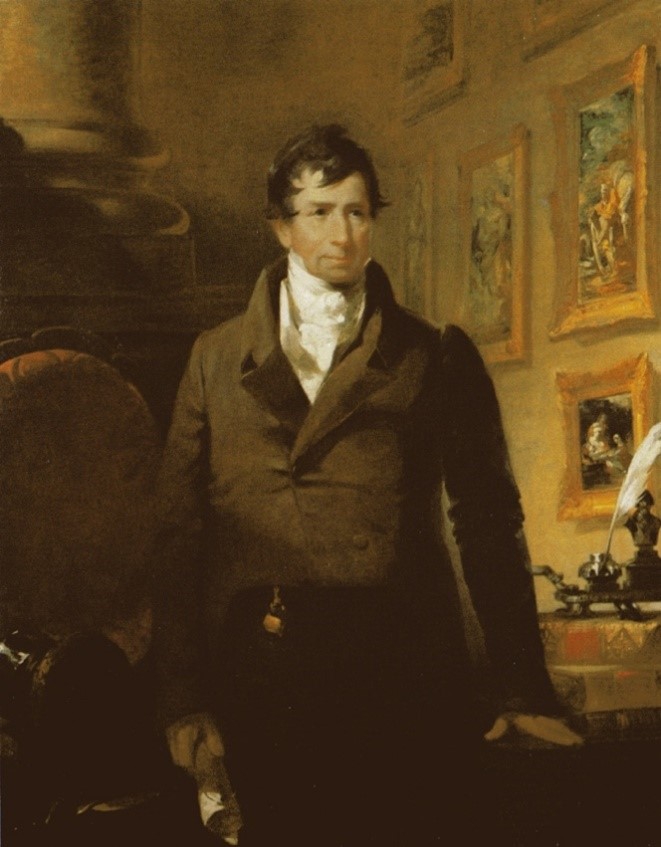William P. Dewees, A Treatise on the Diseases of Females (1824)
By Alexis Wright

William P. Dewees (1768-1841) was a pioneer of perinatal medicine in the United States throughout the early 19th century [1]. Dewees obtained his medical degree in 1806 from the University of Pennsylvania, taking special interest into the fields of childbirth and midwifery [2]. He was the first male physician to attempt teaching a full course in midwifery and he encouraged other medical students and physicians to regard his lectures upon recognizing the level of importance the field of obstetrics would hold [3]. His lectures on midwifery and female disease, A Treatise on the Diseases of Females, went through 10 editions [4] and were part of a course he offered at his Alma Mater, the University of Pennsylvania [5]. The second edition is the first on file at the Ruth Lilly Medical Library. It was published in 1828, four years after the 1824 publication of the first edition and was followed by the revised third edition in 1831. This textbook came to medicine at a time when maternal mortality rates were alarmingly high, and intervention was required to effectively improve outcomes for both mothers and infants [6].
This book revolutionized obstetrics, but it also contained information regarding topics in fields of gynecology such as hysteria, which in the 19th century was at the forefront of women’s health due to lack of knowledge regarding the function of women’s bodies and hormones. It was a physical manifestation of any maladies in the nervous system [7] and much investigation was undertaken to find the best method of treatment for women who were being affected. Throughout the textbook, Dewees makes use of case studies in a manner which allows the reader to connect his claims with practical medicine being used at the time. Going against the grain of mainstream medicine claims that the uterus was the organ ruling hysteria [8], Dewees’ textbook claimed that the stomach was the primary cause for fits of hysteria [9]. As he departed from common understandings linking hysteria to women’s reproductive organs, Dewees firmly believed that there was a lack of knowledge regarding the health and diseases of women, because they are biologically and physiologically different from men, who are the default population in medical readings [10].
Much of the field of obstetrics is owed to William Dewees during the early 19th century as he devoted himself to learning and teaching in the fields of gynecology, obstetrics, and pediatrics; but what is known about him is mostly hearsay and tradition, apart from his literary works that continue to outlive him [11]. From the three major works he published, it is clear that he was a very intelligent and sound physician for early 19th century medicine. His use of case studies throughout A Treatise on the Diseases of Females instills confidence that he was a man who knew much regarding gynecology and obstetrics, but also that he was willing to challenge traditional thought processes, not only regarding the causes or origins of disease, but also the organization of health and society. In the area of pediatrics, for example, he made attempts at changing the family model, asserting that fathers should be partially responsible for raising their children [12].
While Dewees helped professionalize gynecology, obstetrics, and pediatrics, he remained a major influence on physician support and pursuit of midwifery. A Treatise on the Diseases of Females is thus just one facet of Dewees’ revolutionary life and career, about which too little is known.
(This post was written for the course HIST H364/H546 The History of Medicine and Public Health. Instructor: Elizabeth Nelson, School of Liberal Arts, Indiana University, Indianapolis).
References:
[1] P.M. Dunn, “William Potts Dewees (1768-1841) of Pennsylvania: Pioneer of Perinatal Medicine in America,” Archives of Disease in Childhood – Fetal and Neonatal Edition 75, no. 1 (1996): F69.
[2] Ibid.
[3] Ibid.
[4] William P. Dewees, A Treatise on the Diseases of Females (Philadelphia: Carey, Lea, and Carey, 1828) 17-21, 26, 451-484.
[5] Dunn, “William Potts Dewees,” F69.
[6] Ibid.
[7] Dewees, A Treatise on the Diseases of Females, 451.
[8] J. Mahon, “Observations on the Treatment of Hysteria,” London Medical and Physical Journal 42 no. 248 (October 1819): 289–92.
[9] Dewees, A Treatise on the Diseases of Females, 451-484.
[10] Ibid.
[11] Thomas, T Gaillard. “A Century of American Medicine. 1776-1876: Obstetrics and Gynecology,” American Medical Science 72 (July 1876): 133–70.
[12] T.E. C., Jr., “On the Father Assuming Partial Responsibility in the Rearing of Children—as Viewed by William Potts Dewees in 1825,” Pediatrics 64, no. 6 (1979): 859–859.
